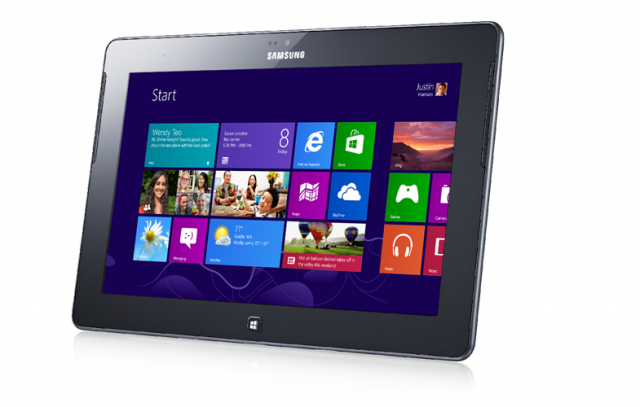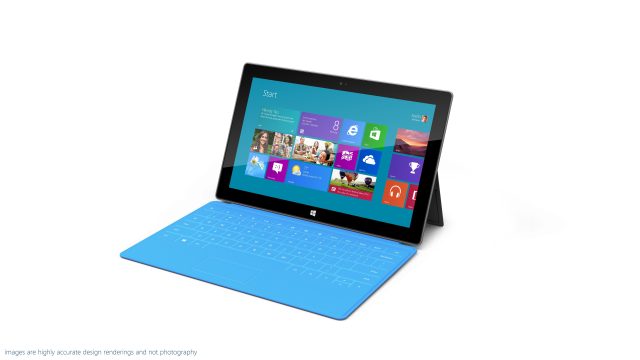
Ever since it was announced, I've had skepticism about the purpose and value of Windows RT, Microsoft's version of Windows that runs on ARM computers. The upside of Windows RT—cheap devices and long battery life—was diluted by Intel finally managing to beat its Atom processor into shape. The downside—incompatibility with almost every Windows application ever written—seemed substantial.
I'm not alone in this skepticism. Acer decided not to ship a Windows RT product, preferring instead to gauge the market reaction (though the company may be softening its stance and might ship a Windows RT tablet later in the year, if it believes that Microsoft has made the operating system sufficiently appealing to consumers). Around the time of CES, Samsung said that it wasn't going to ship its Windows RT device, the Ativ Tab, in the US due to lack of retailer interest. The news has gotten worse: the company is now not going to sell it in Germany as a result of weak demand.
Windows RT is an odd mix of features. Under the hood, it's a near complete copy of Windows 8. In spite of having all the working parts of Windows 8, however, it can't (officially) be used to run desktop applications, even if the developers of those applications are willing to recompile for the ARM processor. Instead, all applications must come through the Windows Store, and be built using the WinRT API.
It does, however, support a handful of built-in desktop applications. Specifically, Word, Excel, PowerPoint, and OneNote are all included. These versions are almost, but not quite, exact equivalents to their x86 counterparts. They are, however, lacking extensibility. There's no macro support, no add-in support. Screen recording in PowerPoint and OneNote is removed, so too is the ability to search audio and video recordings in OneNote.
Many of these missing features won't be noticed, but the lack of macros, and the outright omission of Outlook, is a critical issue for many businesses.
Business use leads onto the final Windows RT issue. Windows RT doesn't enable Windows 8 Pro features such as domain joining (though it can be administered using tools such as Intune). And the version of Office it ships with isn't licensed for business use. Business customers wanting to use Windows RT can do so, but they need to get a companion device license. This license doesn't change any software features; it just authorizes corporate use of the Office apps.
It's not altogether surprising that this range of features hasn't set the world on fire. The size, weight, and battery life of Windows RT devices is well matched by Atom-powered x86 devices—and x86 devices don't have any of the restrictions that ARM ones do. They can run desktop apps. And they cost about the same too. Sure, you'll have to buy Office as an extra, if you need it. But it'll be full Office. With macros. And Outlook.
As currently conceived, Windows RT is a lemon, and users are avoiding it in droves.

But I'm not sure it has to be that way. With a few small changes, Windows RT could make sense, just perhaps not the way Microsoft intended.
Although I've argued on these pages that Microsoft should provide an official method for installing arbitrary apps, including desktop apps, on Windows RT, I think it's clear that there are some markets where the lock down isn't a hindrance, but rather a feature. Corporate desktops and kiosk machines, for example, can both make good use of these restrictions—often they're the kind of restrictions that administrators will impose anyway.
The problem is that the licensing conditions surrounding Windows RT make it an unpalatable product for these very markets. This is a problem that Microsoft could very easily fix. Those corporate usage companion licenses should do more than merely permit Office RT to be used for work. They should unlock domain joining, they should unlock macroing, and perhaps most significantly of all, they should include an Outlook license. There are already rumors that Microsoft is testing an Outlook for Windows RT. This lynchpin of the corporate world should be made official.
I believe this change should, from a technical perspective, be reasonably easy for Microsoft to implement. Macros might be a sticking point, as there are complexities with porting the macro virtual machine to a new architecture, but I'm told that the work has all been done—the decision to not enable macros in the shipping product was done to prevent them from being used to write apps.
With this, Windows RT would become a viable working platform that was tightly locked down, and that could run on relatively cheap, robust, no-moving-part devices.
This would increase Windows RT's value on tablets and similar machines to an extent for corporate users, but I think Microsoft could then go a stage further: embrace Windows RT in non-tablet usage scenarios. Dell's Project Ophelia—an experimental system that puts an Android system on something about the size of a big USB key—is the kind of thing I have in mind. Build boxes maybe the size of a smartphone folded in half, perhaps even smaller, pack them with an ARM processor, 32 GB of flash, a DVI or HDMI port, an Ethernet port and/or Wi-Fi, and a couple of USB ports. For power, they could use a wall-wart. Electricity delivery using Mobile High-Definition Link (MHL) over HDMI would be even more appealing, as they could then be powered directly by a monitor, but it may not be able to deliver quite enough power.
Such (hypothetical) systems would be cheap. Without a built-in screen or battery, you'd be looking at $100 in materials, if that. It would be cheap to run, cutting HVAC costs. It would be robust. No moving parts, nothing to tamper with or go wrong, tolerant of dust, dirt, and vibrations. It would be more than powerful enough for many common desk-bound office tasks. And it'd be tightly locked down, not to mention straight up incompatible with common malware.
For legacy applications, the solution would be to either rebuild them as Metro/WinRT apps, or to use remote desktop to run them on some kind of VDI infrastructure.
Obviously, these solutions wouldn't work well for every organization. I wouldn't pretend that this market would be as sexy as the tablet market, either, and it won't make as much money as Apple makes from the iPad. Microsoft still has a consumer tablet problem that needs a solution. But for the typical office worker this kind of machine would be a neat fit. They'd work well for kiosks and other shared computers, too. The technology all exists today; it just requires Microsoft to change the way Windows RT is sold. With this change, a change that makes Windows RT's current weaknesses into virtues, Microsoft might just have a chance of making some lemonade.
reader comments
210